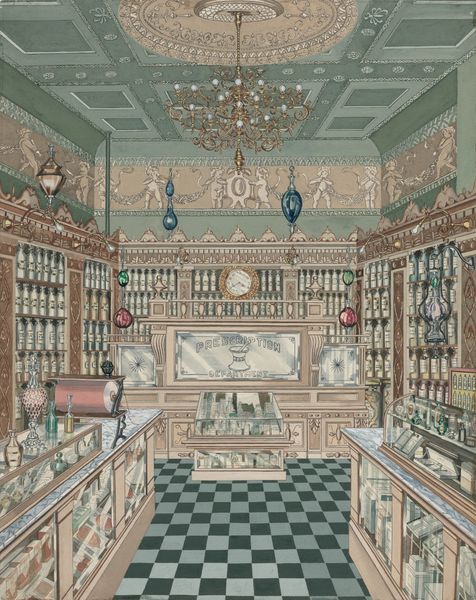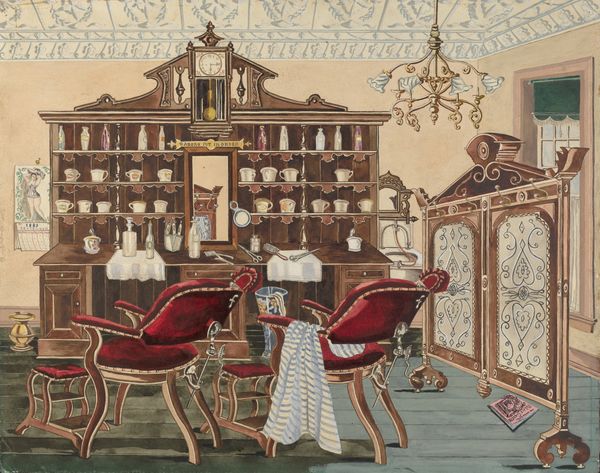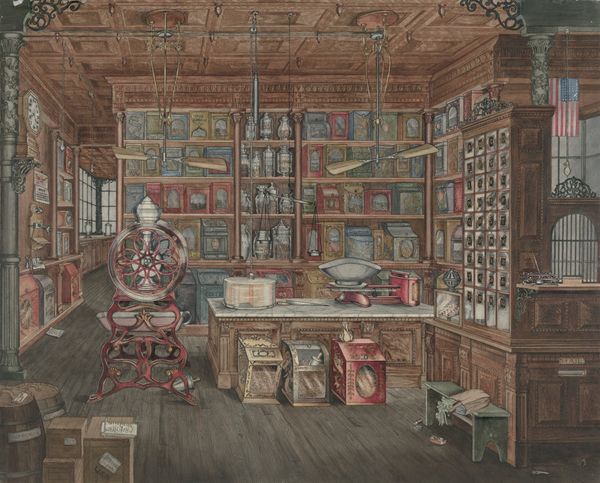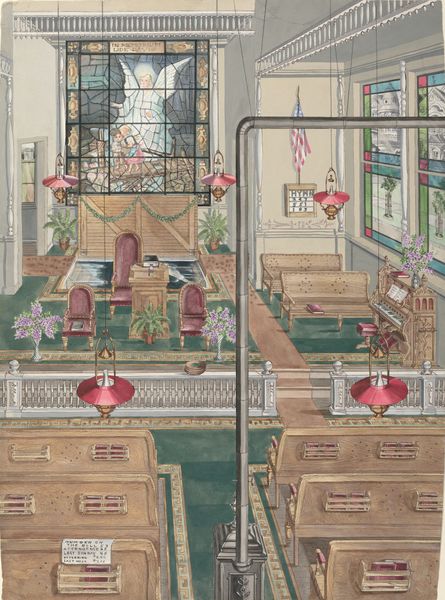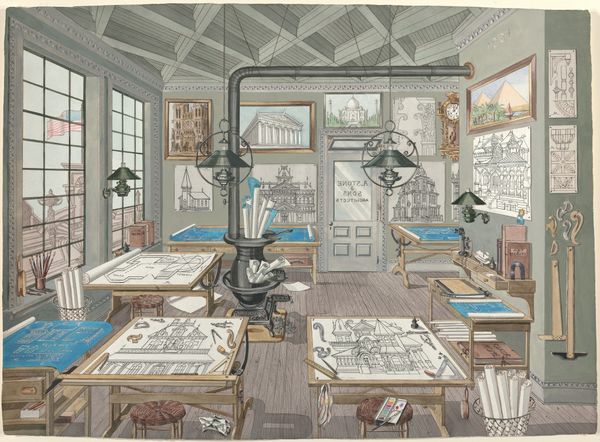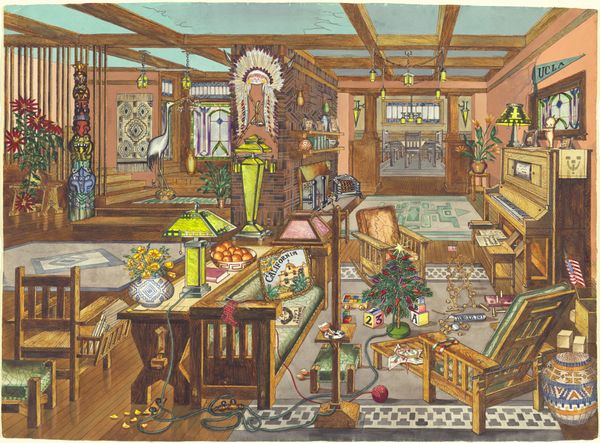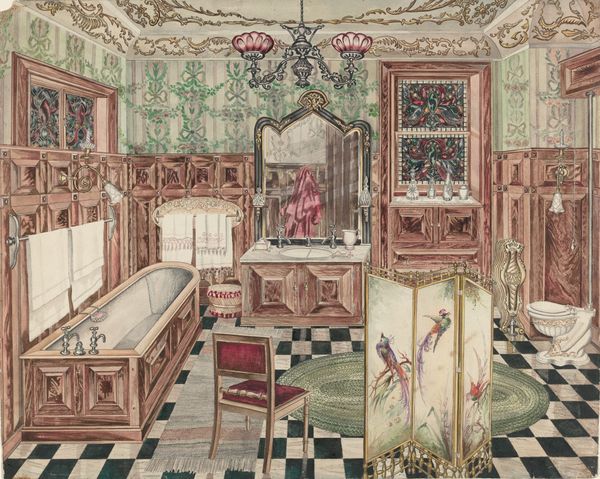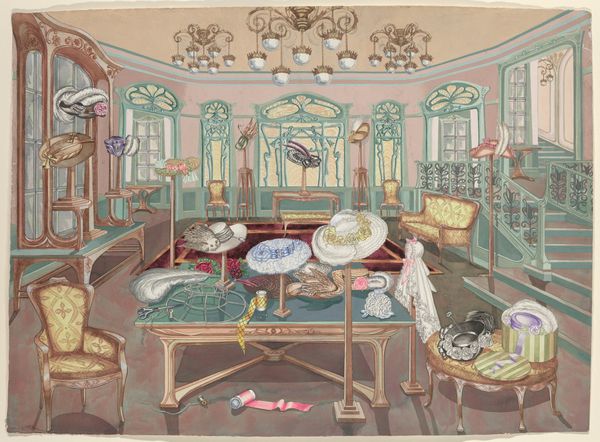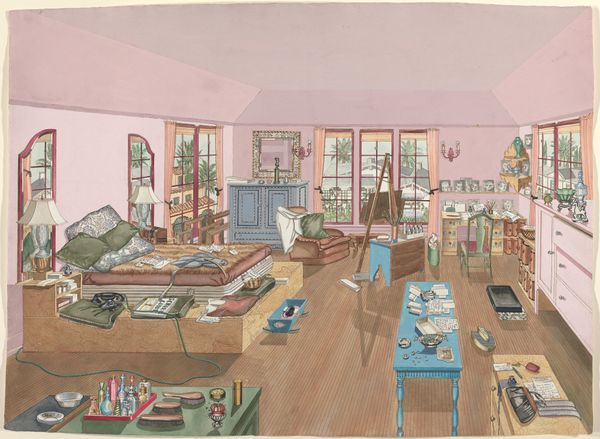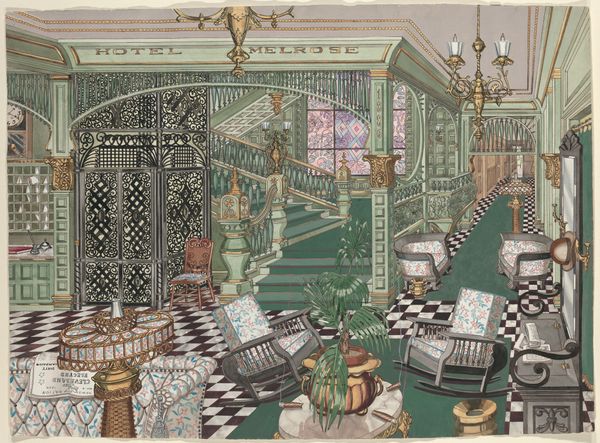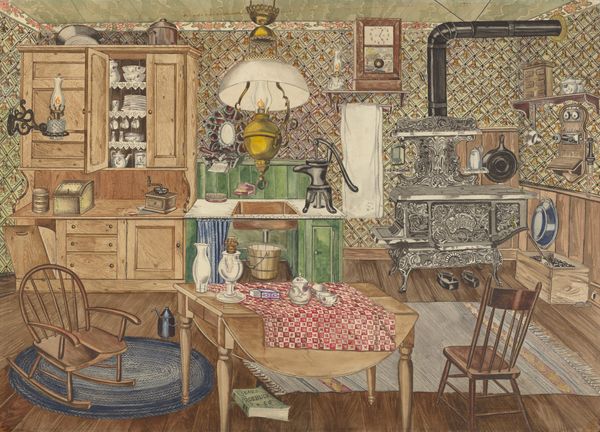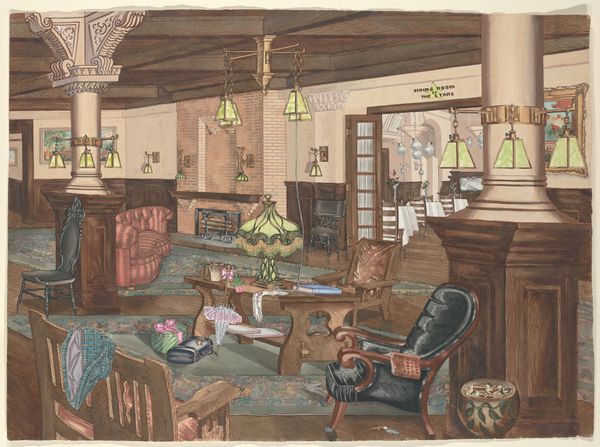
drawing
#
drawing
#
cityscape
#
genre-painting
#
realism
Dimensions: overall: 77.4 x 56.9 cm (30 1/2 x 22 3/8 in.)
Copyright: National Gallery of Art: CC0 1.0
Curator: Perkins Harnly, our artist today, beckons us into a time capsule with "Cigar Store, 1901," a drawing made sometime between 1935 and 1942. Isn’t it remarkable how much information he packs into one scene? Editor: Absolutely! My initial thought? This piece has an intriguing, almost theatrical quality, like a stage set from a long-lost play. It is painstakingly detailed; the artist seemed determined to preserve this image exactly as he perceived it, or remembered it! Curator: Harnly certainly excelled in realism, focusing particularly on genre painting and cityscape scenes. His detailed rendition prompts reflection on public imagery during a particular era. Take, for instance, the portraits of McKinley and Queen Victoria above the doorway – reminders of a world transitioning into a new century. Editor: Those presidential and monarchial portraits! Harnly presents them against the background of waving American and British flags and, alongside an almost offensively stereotyped image of Native Americans, creates an ambiguous picture that raises various social issues prevalent in public perception. It's almost dreamlike—the type of detailed dream you wake up from wondering about how all these objects connected to your life or anxieties. Curator: Precisely. And I would posit that the dream that you identify is deliberately political. The placement and inclusion of imagery were rarely accidental; Harnly is signaling the status of these spaces within particular community frameworks of the era. This work reveals layers of institutional influence, which invites viewers to consider how they affect identity and behavior. Editor: I concur completely. It is so difficult for the modern viewer to enter Harnly's turn-of-the-century head space and to feel all those influences in a completely open way. But, the details are a portal. How does the presence of such blatant references, alongside ordinary objects, create—or diminish—that experience for viewers today? The beauty and the strangeness hold equal weight for me here. Curator: It’s a delicate balance he achieves, indeed, provoking thoughtfulness about how history is made visible – or is subtly concealed – through what we choose to preserve and what cultural institutions embrace. Editor: So well stated. This work becomes more layered as we explore it and is deeply indicative of what it meant, on so many levels, to just exist then. Thank you.
Comments
No comments
Be the first to comment and join the conversation on the ultimate creative platform.
